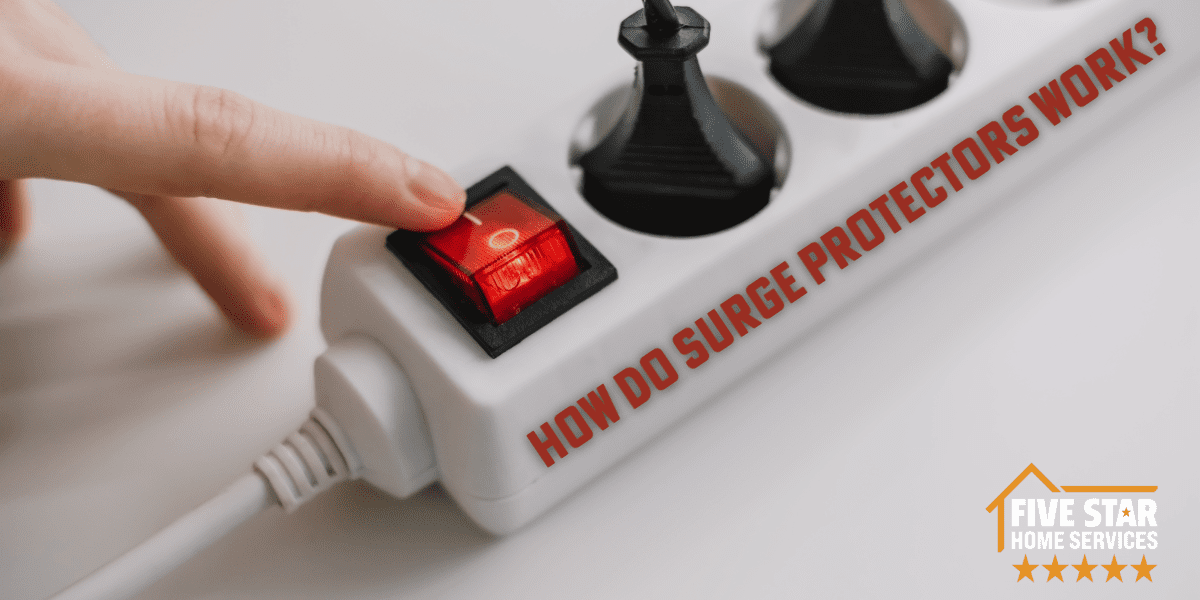To understand how surge protectors work, we first need to know what a power surge is. The electric current flowing into the average US household is designated at a standard voltage of 120 volts. If there is an increase in voltage, it is called a power surge, and if it is significant enough, a power surge can wear down or even damage electrical components, devices, and appliances. In US homes, spikes that reach a voltage of 169 create damaging electrical arcs.
Signs that a power surge just occurred:
- Faulty circuit breaker
- Flickering/dimming of lights
- Flashing clocks on electrical appliances
- Burning smell
- Buttons that need to be reset manually
Why Do Power Surges Occur?
A few common causes of an increase in electrical current are:
High-Powered Electrical Appliances/Devices
These cause a sudden increased energy demand due to the cycling of compressors and/or motors, eventually disrupting the steady flow of electricity, such as refrigerators and air conditioners. Some power surges involve space heaters or power tools on a smaller scale, where circuits become overloaded regularly, eventually damaging the appliance in the long run.
Faulty Electrical Wiring
This is commonly found in older homes with an outdated electrical system, where loose connections abound, potentially creating power surges. Similarly, it may occur in homes that haven’t had electrical maintenance.
Downed Power Lines And/or Problems With the Utility Company
Power lines that get knocked down (due to fallen tree limbs or other accidents) or lines interrupted by animal intrusion can cause power surges. Problems can also occur at any point in the utility company’s intricate electricity distribution network. For instance, when electricity is restored after a power outage, it can cause a power surge because excess electricity may flood the system.
Lightning
This is the least common cause but has the most powerful effect because it has the most potential to damage any electrical device instantly. Lightning can deliver millions of volts when it strikes near a power line and can enter your home not only through your home’s wall outlets but also through the telephone lines of your cable TV. Because of the massive power surge from lightning, the best protection for appliances and electrical devices is to unplug them.
How to Protect Your Home From Power Surges
So, how can you protect your home, electrical devices, and appliances from power surges when they occur? As the National Fire Protection Association recommends, a surge protector system gives you the protection you need from power surges. Surge protectors look similar to power strips and can also accommodate multiple devices. But that is where the similarities end. Power strips cannot protect from power surges. Their main purpose is to provide additional outlets, and even if they may have an on/off switch, they cannot handle issues with the flow of electricity.
Surge protectors quickly redirect the excess electrical current from the outlet above the accepted level to the grounding wire. A variable resistor called a metal oxide varistor (MOV) is contained in standard surge protectors that change resistance depending on the voltage. In the event of a power surge, the transient increase in voltage causes a decrease in resistance. The lowered resistance prompts the MOV to conduct a lot of current to eliminate the extra voltage and protect sensitive devices. MOVs are usually connected in a parallel circuit, enabling them to handle energy better. They are very effective in absorbing short-term spikes in voltage by diverting only the current of the power surge while devices connected to the surge protector continue to be powered by the standard current.
Depending on your home’s needs, surge protectors offer the basic to the broadest amount of protection. Choose from these surge protectors based on the level of protection desired:
- A surge suppressor power strip is the most widely and commonly used protector because of its portability and ease of use. It is simply plugged into the wall outlet and accommodates multiple electronic devices simultaneously.
- Outlet adapter surge protector – This protector is similar to the above power strip. Still, instead of having a cord to plug into the wall outlet, the adapter directly plugs into the wall. Therefore, it is a very good space-saving alternative to power strips.
- Backup battery surge protector—If there is a power outage, this kind of surge protector continues to supply power to connected devices, thanks to the backup battery. When plugged into the wall outlet, the backup battery surge protector allows the battery to be charged instead of directly charging devices, limiting damage to the devices in case of a power surge.
- A whole-house surge protector covers a larger scale of protection, from your HVAC system to your home’s most sensitive electronic equipment. It is hard-wired into your home’s electrical system by a licensed electrician and installed in the main breaker panel. It protects from internal power surges and redirects external ones directly to the ground.
It is always recommended that you have regular electrical inspections by a licensed electrician. Surge protectors are a very effective way of ensuring minimal damage to your home, electrical devices, and appliances. If you have any questions regarding electrical maintenance checks for your home or would like to know more about whole-house surge protectors, Five Star Home Services can help. Our expert electricians are available whenever you need them. Call Five Star Home Services now at (833) 405-8009.


